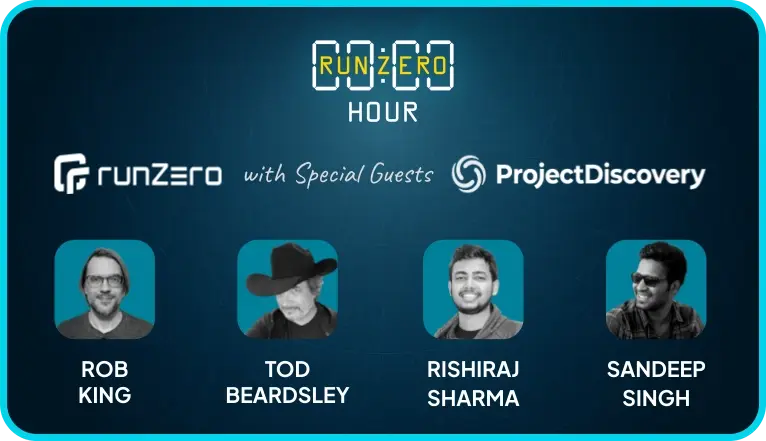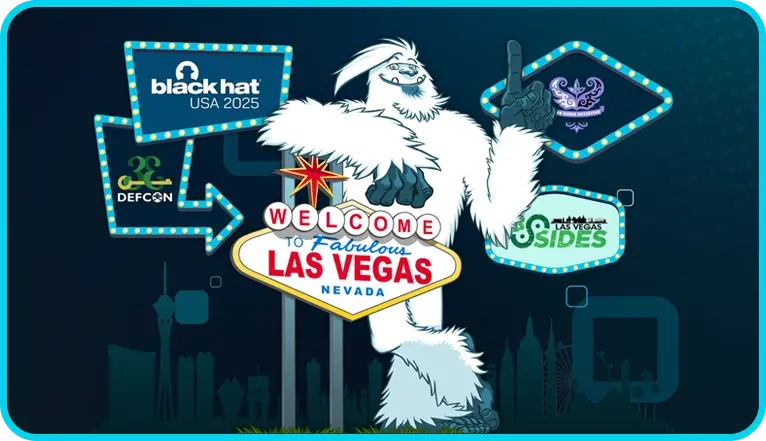This is part four of our rebrand journey. Be sure to check out part one, part two, and part three of this story.
Picking a final candidate #
The name runZero actually wasn’t one of the auto-generated domains but a close buy now option that we discovered when looking through the lists. The name passed many of the criteria of the SMILE and SCRATCH tests, as well as the phone test.
To our surprise, we didn’t find a single trademark registration worldwide for the exact term runZero. For any other term, we’d found active and expired registrations for other categories, which made them legally viable but not unique. This name would make it very easy to rank for SEO and we didn’t have to fear any trademark infringement claims.
Many alternative spellings and other top level domains were still available, so we acquired the following list for about $10,000 in total, which we found very reasonable for our scope:
- runzero.com
- runzero.net
- runzero.org
- runzero.cloud
- runzero.co
- runzero.dev
- runzero.info
- runzero.io
- runzero.run
- run0.com
- run0.net
- run0.org
- run0.cloud
- run0.co
- run0.dev
- run0.io
- zero.run
- zerorun.io
- zerorun.net
- zerorun.org
This was not a complete set but as close as we were ever going to get with any other name.
The final name wasn’t as connected to the themes of visibility and light as we had originally intended. It’s more of a clean, empty vessel that we can start filling with meaning. If you look closely, other brands are in the same boat: Apple, Amazon, and McDonald’s didn’t have much meaning inherent in the name. It was the branding campaigns and associations that built the brand value over time.
Searching and registering trademarks #
For each of the late-stage candidates, we did a quick check to see if we found any close trademarks. The main databases to check are:
- United States: USPTO TESS
- European Union: UIPO
- Australia: IP Australia
- Worldwide: WIPO
While I always searched all of them for serious candidates, I found that WIPO seemed to cover the other three as well.
We felt comfortable enough to buy the domains for a relatively low price after our in-house trademark search and deep Google search, but agreed to hire a trademark attorney to do a “knockout search” and register the trademarks for us because the risk of failure after a rebranding launch was too large to risk doing on our own.
Because our law firm didn’t have an intellectual property practice, we were on the search for an IP law attorney. The filing was pretty straightforward, so I opted to find a lawyer on Upwork.com, which gave us quick and easy visibility into user ratings, hourly rates, and availability. I made sure that we chose an attorney who was licensed in the USA and registered with the USPTO. We picked Michael Eddy of patent.org, who I was very happy with and can recommend.
Learning #6: Do a first trademark search yourself to weed out bad naming candidates but don’t skimp on a knock-out search and filing through an attorney as this can come to haunt you later if you make a mistake.
Figuring out which countries we wanted to file in was a bit of a head scratcher because we couldn’t find great advice from our usual suspects. We screened all of our competitors’ trademarks to see where they had registered their trademarks. Generally, larger companies have more countries registered. Most had registered in their country of origin and / or the United States, which seemed a bit arbitrary. I thought about the problem in the following way: If we had a trademark conflict, which countries would be most likely to create an issue if not included in our registration? We decided to file in the United States, European Union, and Australia. If we were excluded from other regions, we could live with it, and we felt we couldn’t reach our full potential for success if we didn’t have these regions.
Naming will get harder over time #
I bet you know at least one restaurant in your neighborhood that is called “Word & Word”, and it won’t be super common words either. I can think of Abe & Louie’s, Pig & Trotter, and Alden & Harlow right off the bat. That’s because you can’t have a restaurant nowadays without having a website. As the cost of starting your venture has gone down due to cheaper digital infrastructure and brick and mortar businesses create digital presences much earlier in their cycle, naming has become harder.
At the same time, the set of available domains is decreasing. Few owners will happily drop their domain even if their business goes bankrupt because holding on to an existing domain is about the price of a Venti Latte and getting your hands on a good new domain is hard.
Add to that some of the bigger companies that aggregate more and more domains but are reluctant to give them up for these and other concerns. For example, ACME Corporation had more than 1,600 domains on their DNS server and didn’t want to give up a single domain due to security concerns.
You’d think that the pressure on domain names would have gone down with the proliferation of new top-level domains. However, many TLDs are unknown and plain weird to the uninitiated. For example, I opted for a dot center domain for a non-profit that I helped bring online. With rumble.run, we had to confirm the TLD extension each time we gave out our email or web address. Our emails often got caught up in spam filters because of the unusual TLD.
Knowing that things would get harder in the future, I picked the top twenty runners up from the available domains list and registered them myself. That’s my pension fund in case runZero doesn’t work out.
Now that it’s finished #
I couldn’t have done this project without the help of the entire team, whom I will be eternally bonded with through mutual trauma and the knowledge that we created something worthwhile. If you’d like to learn how we developed the logo as part of our visual brand, check out Abeer’s blog post Zeroing in on our logo and product design.

















